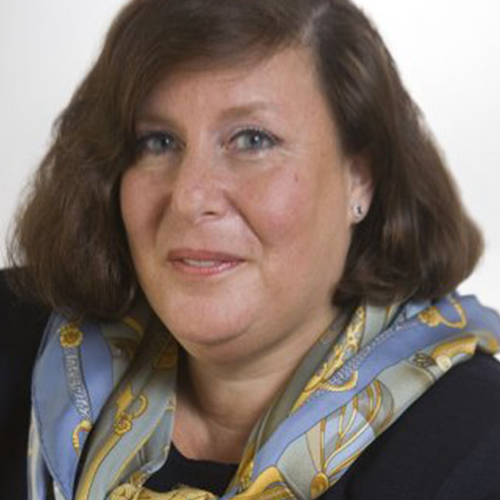Lawyers and legal marketers both have the same goal: to become trusted advisors to their clients (including in-house “clients”). But how, exactly, do you take on that role?

Jan Anne Dubin, CEO and Founder of Jan Anne Dubin Consulting, has spent 35 years working with professional services firms, so she’s well-versed in the advisor-client relationship. She joined the Law Firm Marketing Catalyst podcast to talk about the difference between an advisor and an expert, building long-term professional relationships and maintaining your position as an advisor once you’ve gotten it. Learn more below.
On the difference between an advisor and an expert
Jan lives by the phrase “you can’t push a string.” Even though advisors can provide enthusiasm and support for their clients’ work, at the end of the day, they’re meeting at the juncture where the proverbial string and inertia begin. The advisor’s energy is meeting the client’s energy, and together they take ownership and move the challenges before them forward.
Jan often references the work of David Maister, a leading writer on professional services management. According to Maister (and Jan), an expert is an authority on a particular subject who takes charge in times of need and solves the client’s problems. An advisor, on the other hand, takes a more insightful and supportive approach. An advisor doesn’t have to be right or even provide a definitive answer; they simply provide guidance while the client maintains responsibility. This close working relationship means that advisors and their clients can build a long and fulfilling relationship.
On becoming a trusted advisor
Anyone can become a trusted advisor, but they need to develop experience, gravitas and credibility to move into that role. Although younger professionals can’t become an advisor overnight, they can start laying the groundwork to become one.
The first and most important step to becoming an advisor is to understand your client’s business. This includes their industry, their challenges and the pressure they’re under. It’s critical that you know their needs inside and out so you can develop a framework for how you can assist them.
You can’t assume what your client’s needs are, either. You need to gain that insight from an external, boots-on-the-ground perspective. Meet in your client’s office so you can see their environment. Learn what makes them tick. Ask fierce, straightforward questions that get to the heart of the information you need.
Even then, it’s not enough to just ask questions — you need to really listen to the answers. As you move into an advisor role, you can’t neglect the importance of actively listening to your clients and retaining the information. Take notes if you need to. You never know when insight shared years ago will come back into play.
On the advantages young advisors have
Although young professionals likely don’t have the experience to be seen as trusted advisors, that lack of experience often means they’re open to new things. Excitement and openness can be channeled and used in your favor when building relationships and meeting new people. Too, enthusiasm for networking likely won’t last forever, so take advantage of it while you can and build your network sooner rather than later.
On determining if a relationship is worth investing in
Client-advisor relationships need to be nurtured, but you can’t necessarily decide at the onset whether you want to take on the advisor role. It must evolve naturally. What you can do, however, is treat all internal and external clients well. If you’re true to your word and prove yourself, eventually some relationships will grow beyond the scope of work that you started with. At that point, you’ll know you’re moving into the advisor role.
Law firm marketers and business development professionals also have the interesting distinction of being trusted advisors to lawyers, who are trusted advisors to their own clients. The more marketers can support lawyers in this position, the stronger the relationship becomes, and together you’ll be a powerful team for the firm.
On maintaining your position as a trusted advisor
It takes a lot of time to create a strong relationship, but only seconds to destroy it — and you don’t get a second chance. One blip in the course of a long-term relationship is probably excusable, but major mistakes, like breaking promises or sharing confidential information, are almost guaranteed to ruin client relationships.
The most important thing you can do to maintain your position as advisor is manage expectations. Understand the way your clients like to communicate and don’t drop surprises on them. At one point or another, everyone has promised deliverables sooner than what’s realistic, but don’t make a habit of it. Work backwards from the end goal and create manageable timelines that work for you and your clients.
As an advisor, you’ll inevitably have to break bad news to clients. When that happens, be direct and sensitive. Your clients deserve the respect of a phone call or having those tough conversations face-to-face. This also allows for a conversation beyond the bad news to hopefully resolve the issue and discuss next steps.
On trends in the client/advisor relationship
Professionals are moving beyond one trusted advisor to having a personal “board of directors.” The individuals in this group of wise colleagues can each provide a unique perspective on challenges and opportunities for growth. Professionals can trust this inner circle to hold up an untainted mirror and help them break out of their comfort zones.
As the legal industry becomes more diverse and attuned to differences in gender, race, ethnicity and beyond, it is becoming increasingly important that decision-makers have advisors who are equipped to work across those differences. Advisors who have personal or learned insight about diversity can offer a fresh and important perspective to their clients. You don’t necessarily need to have the same background as someone to serve as their trusted advisor, but you do need to see them without bias.
Click here to download/subscribe to the Law Firm Marketing Catalyst podcast.


